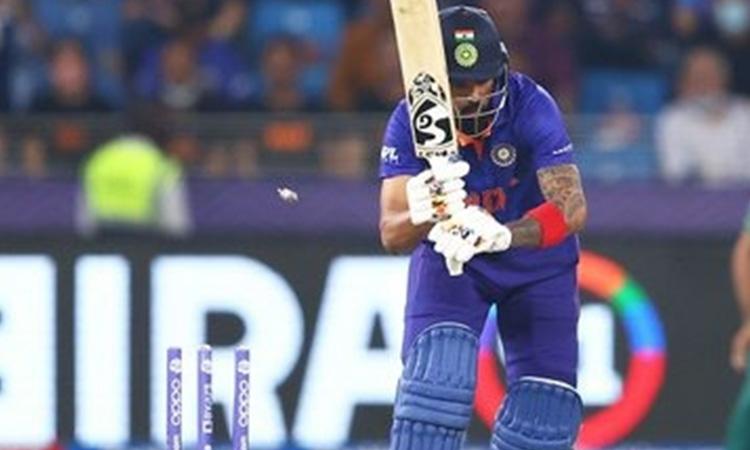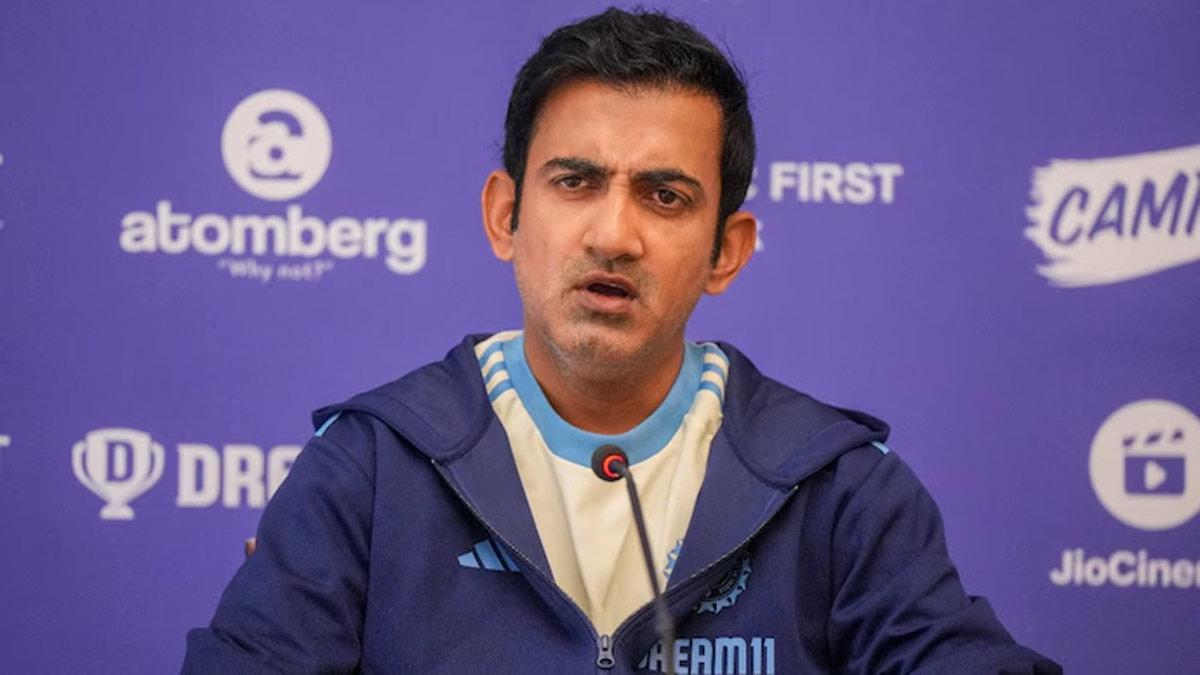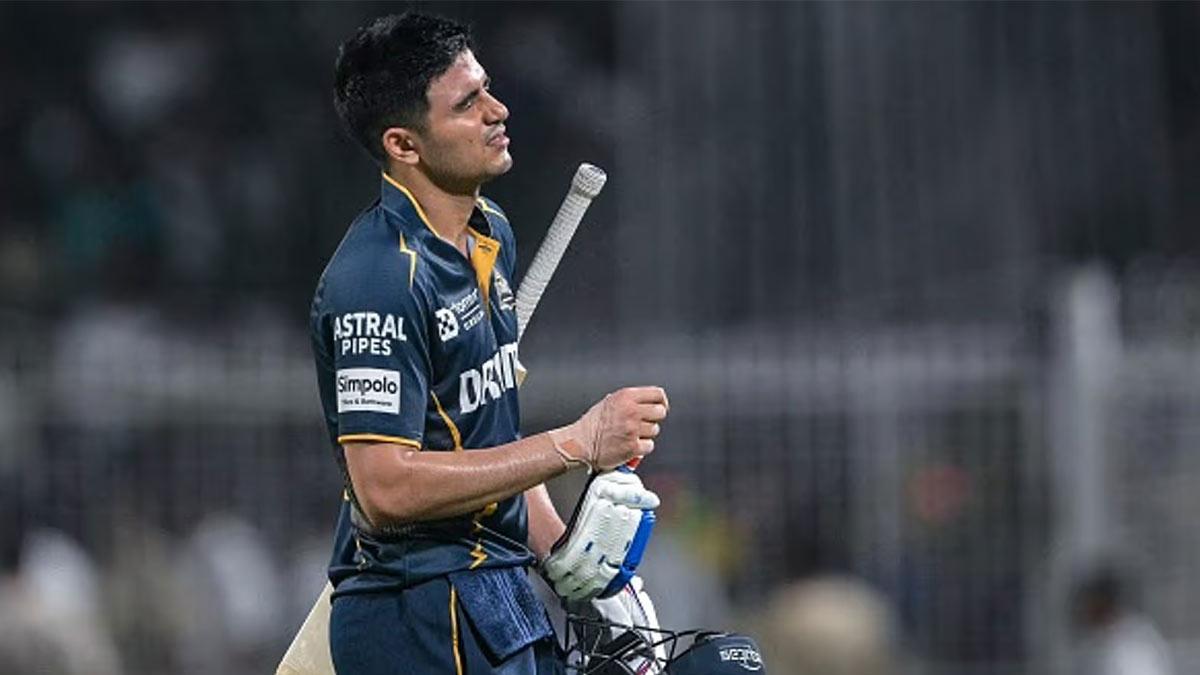With Pakistan winning two matches in three days against India and New Zealand in the ICC Men's T20 World Cup, they have now become the unquestionable favourites to top Group 2. What the back-to-back victories have ensured that the rest of India's matches are now a do-or-die affair, starting from Sunday's clash with New Zealand in Dubai.
There is no doubt about the quality of talent in the Indian batting order, with anyone capable of delivering a match-turning innings on their day. But last Sunday's ten-wicket hammering from Pakistan in the tournament opener has revived a painful memory: the early fall of the openers, especially to inswingers. In a T20I, openers getting a good start means that the team can build up on it and end at an imposing total. But when the vice-versa happens, then the other batters take up the rebuilding act and finish at a just-par total.
Pakistan's main wrecker-in-chief, on Sunday, Shaheen Shah Afridi, did just that. Before the high-octane India v Pakistan match, K.L. Rahul had never faced Afridi before. Rohit Sharma, on the other hand, played Afridi for just 19 deliveries in the 2018 Asia Cup, a 50-over affair.
ALSO READ | BCCI president Ganguly quits position at ATK to avoid conflict of interest
Afridi exploited the fragility of the Indian openers against left-arm pace, mainly inswingers. On the fourth ball of the innings, Afridi got a middle-stump yorker to swing back in and ended up rapping Sharma in front of the stumps while he was trying to flick on the leg-side. On the first ball of his next over, Afridi took out Rahul with a peach of a delivery. Rahul, trying to whip across the line, missed the nip-backer coming in sharply and sneaked through the gate to hit the stumps.
The twin strikes by Afridi meant that India recovered from the early blows and managed to reach a par-total which was made to look easy by wonderful stroke play of Babar Azam and Mohammad Rizwan.
Against inswingers in T20Is, Sharma averages just 17.43 at a strike rate of 98.4 and being dismissed seven times. Rahul on the other hand, fares worse. He averages 16.4 and has a strike rate of 95.3, being dismissed five times.
New Zealand have a world-class left-arm pacer in Trent Boult, who played a part in India's early collapse in the 2019 Cricket World Cup semi-final in Manchester. His ability to cause havoc with in-swing and out-swing will trouble Indian openers.
After New Zealand, India will play Afghanistan in Abu Dhabi on November 3. They will be up against a three-pronged spin attack of captain Mohammad Nabi, Rashid Khan and Mujeeb Ur Rahman. Rahman had run through the Scotland batting order on the back of googlies, taking 5/20 while Khan scalped 4/9. In T20Is, against googly, Sharma averages 30 with a strike rate of 130.4, dismissed just once. Rahul, on the other hand, averages 35 with a strike rate of 120.7, dismissed just once.
ALSO READ | T20 World Cup: Bowler, Roy power England to 8-wicket win over Bangladesh
Captain Virat Kohli has got the best numbers against in-swing in the team. With an average of 47.33 and strike rate of 154.3, Kohli has been dismissed just thrice by the in-swingers in T20Is. But his numbers against googly are pale, averaging 24 with a strike rate of 106.7 and dismissed twice.
Wicketkeeper Rishabh Pant has faced in-swing just once in T20Is, scoring just six and being dismissed. Against googly, he averages 53 and has a strike rate of 151.4 while being dismissed just once. Suryakumar Yadav hasn't been dismissed by in-swing yet in T20Is but has been dismissed by googly once out of three occasions. Hardik Pandya, whose ability to bowl has been a mystery, has been dismissed by in-swing in the only occasion he faced this type of bowling. Against googly, he has been dismissed once out of seven occasions with a strike rate of 66.7.
There are clearly in-swing and googly threats for the Indian team from their next two opponents in the men's T20 World Cup. It will be interesting to see how the batting order, especially the openers respond to it, something which will go a long way in deciding how long India's journey in the tournament will be.


















